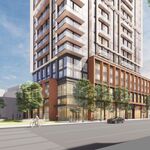Its worth noting that a subway theoretically shouldn't have to run exclusively under one street or ROW. The beauty of a subway is, at least in some ways, that it is meant to go where people want as opposed to where roads go. It goes without saying I don't have detailed origins/destination data for trips downtown. That said, its pretty uncommon elsewhere on earth to build transit lines exclusively along a street grid. So, maybe, people in Regent Park would rather just go strait to Union/CBD than E/W along Dundas.
As it relates to the 'queen vs. railway' debate, maybe it would be best to sort of split the difference. Use the rail corridor between the Don/Union, west of that though it could hook north through the Entertainment District and just gradually snake it's way through the west end so as to as to pick up as much local ridership as possible. I personally don't see the point in running a subway exclusively along Queen when 2-4 stations in the vicinity of Queen as part of a larger line could do a lot of the same thing.
Also, when talking about new subway lines, I think it would make sense to consider moving to a new and lighter rolling stock. I've said it before, but something more along SRT scale would be more practical than the 3.5m wide super trains the TTC currently uses. The system should be able to handle tighter curves, so as to allow more flexible route planning, have a narrow enough profile to avoid having to design complex twin tunnel structures and be 100% automated from the outset to allow 90 second headways.




